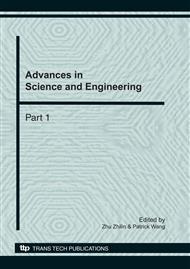[1]
Mak S T. TWACS, a Power Line Communication Technology for Power Distribution Network Control and Minitoring. IEEE Transactions on Power Delivery, 1986, PWRD-1(1).
DOI: 10.1109/tpwrd.1986.4307889
Google Scholar
[2]
Mak S T. A New Method of Generating TWACS Outbound Signals for Communication on Power Distribution Networks. IEEE/PES Winter Meeting, Dallas, Texas, (1984).
DOI: 10.1109/tpas.1984.318523
Google Scholar
[3]
Sioe T. Mak. Power Frequency Communication on Long Feeders and High Levels of Harmonic Distortion[J ] . IEEE Transaction on Power Delivery. 1995 , 10 (4) : 2034 - (2042).
DOI: 10.1109/61.473387
Google Scholar
[4]
Mak S T1 Denny raford : design considerations for implementation of large scale automatic meter reading systems1 IEEE Transaction on Power Delivery , 1994 ; 10 : 97~103.
DOI: 10.1109/61.368410
Google Scholar
[5]
D. E, Johnson. active filter precise design handbook, electronics industry publishing house, (1984).
Google Scholar
[6]
Zhang Jianping. The adaptive filtering method eliminating the 50Hz disturbance in the transient electromagnetism meter. Measuring and control technology, 1999. NO. 6.
Google Scholar
[7]
Zhou Shiwei, Zhang Shaoqing. The principle and realization of power distribution network bidirectional power frequency correspondence [J]. Electrical network technology, 1999, (10): 37 - 44.
Google Scholar
[8]
Cui Jintai, Cheng Zhengxing. Wavelet analysis introduction[M]. Xi'an: Xi'an Jiaotong University press, (1994).
Google Scholar
[9]
Jin Lingling, Wang Liuyi. The application of Wavelet transformation in computer network information intelligence processing[J]. Computer applied research, 2003, 20: 303 -305.
Google Scholar
[10]
Wu Bin. Automatic meter reading based on distribution network[J]. Electrical measurement and instrument. 2001, (4).
Google Scholar
[11]
Zhang Xianda. Modern signal processing [M]. Tsinghua University press, 1998, 146 - 203.
Google Scholar
[12]
Hu Guangshu. Digital signal processing-theory, algorithm and realization [M]. Tsinghua University press, 1997, 22 - 25.
Google Scholar
[13]
Luo Falong, Li Yanda. Neural network signal processing [M]. Electronics industry press, 1993, 94 - 102.
Google Scholar
[14]
Wang Xinmei, Xiao Guozhen. Error correcting code - principle and method [M]. Xidian University Press, (1991).
Google Scholar


